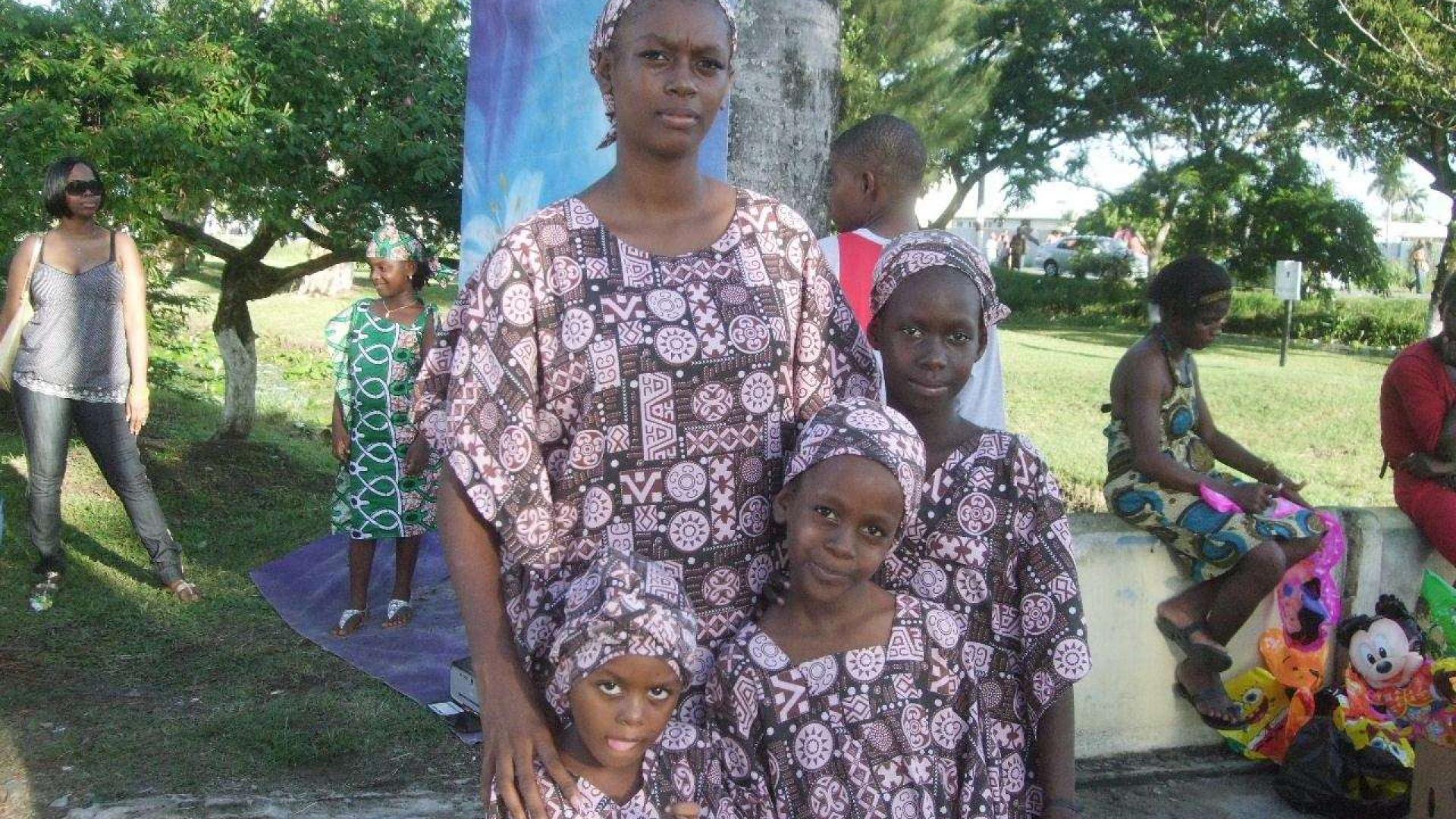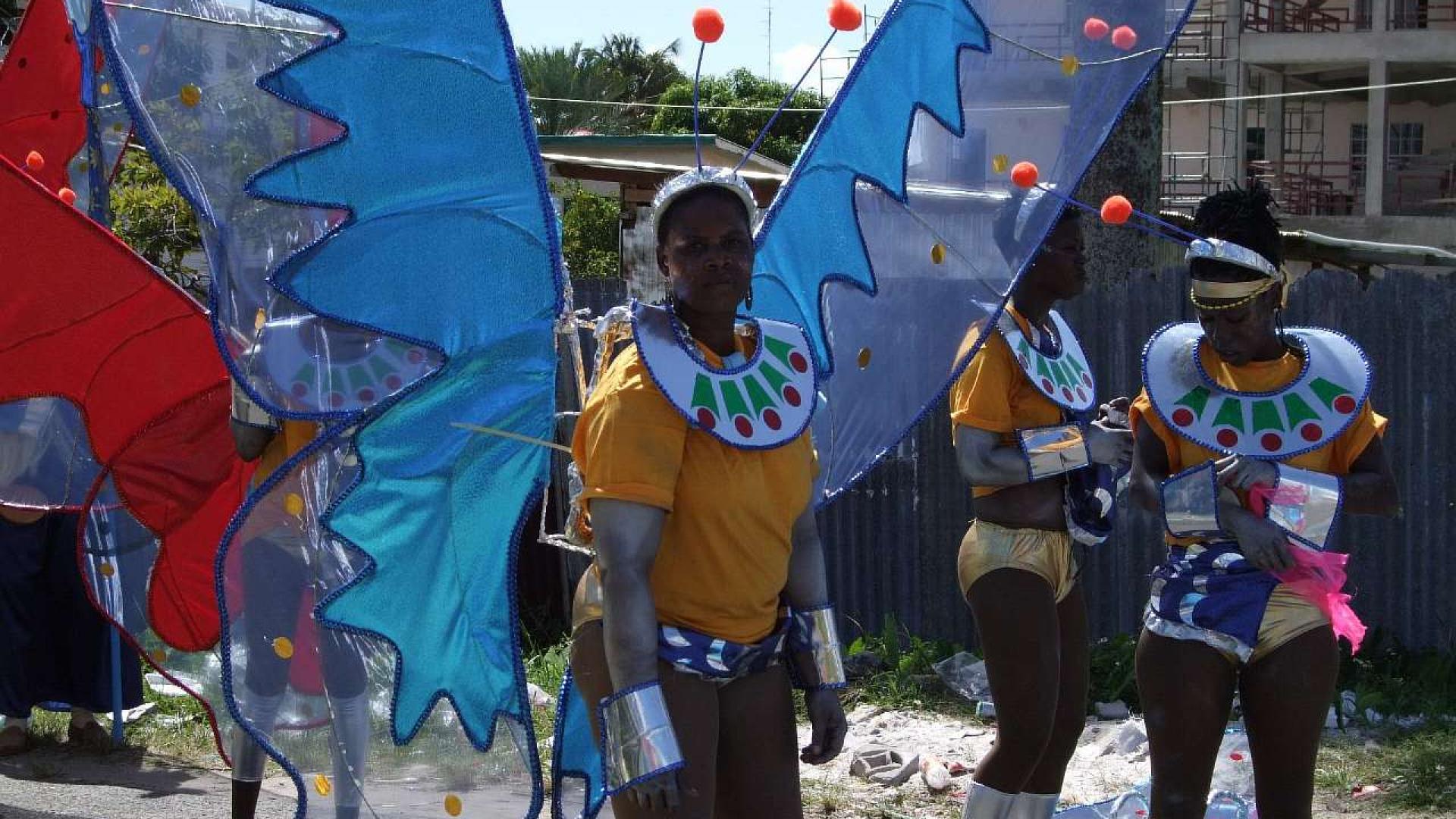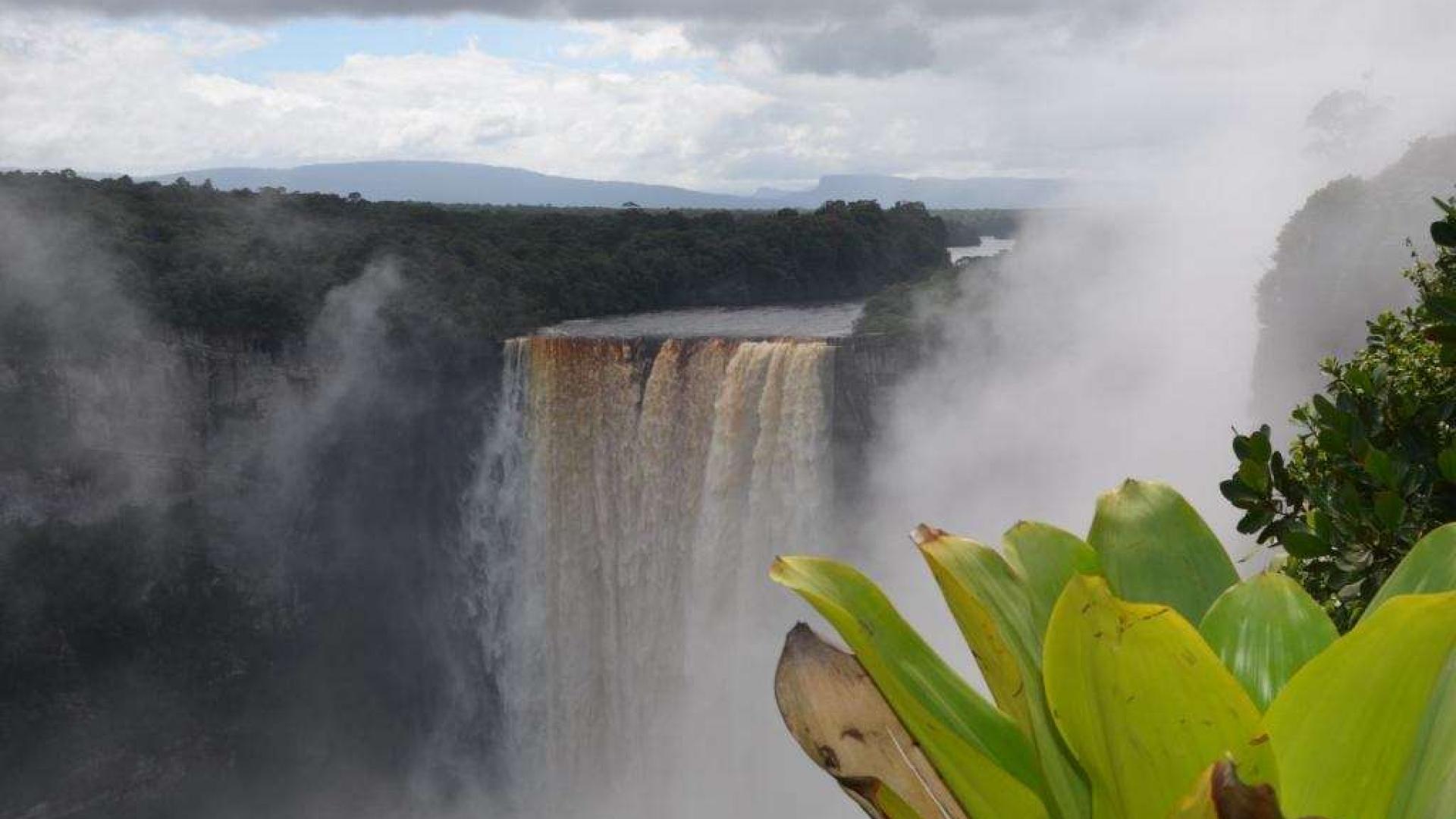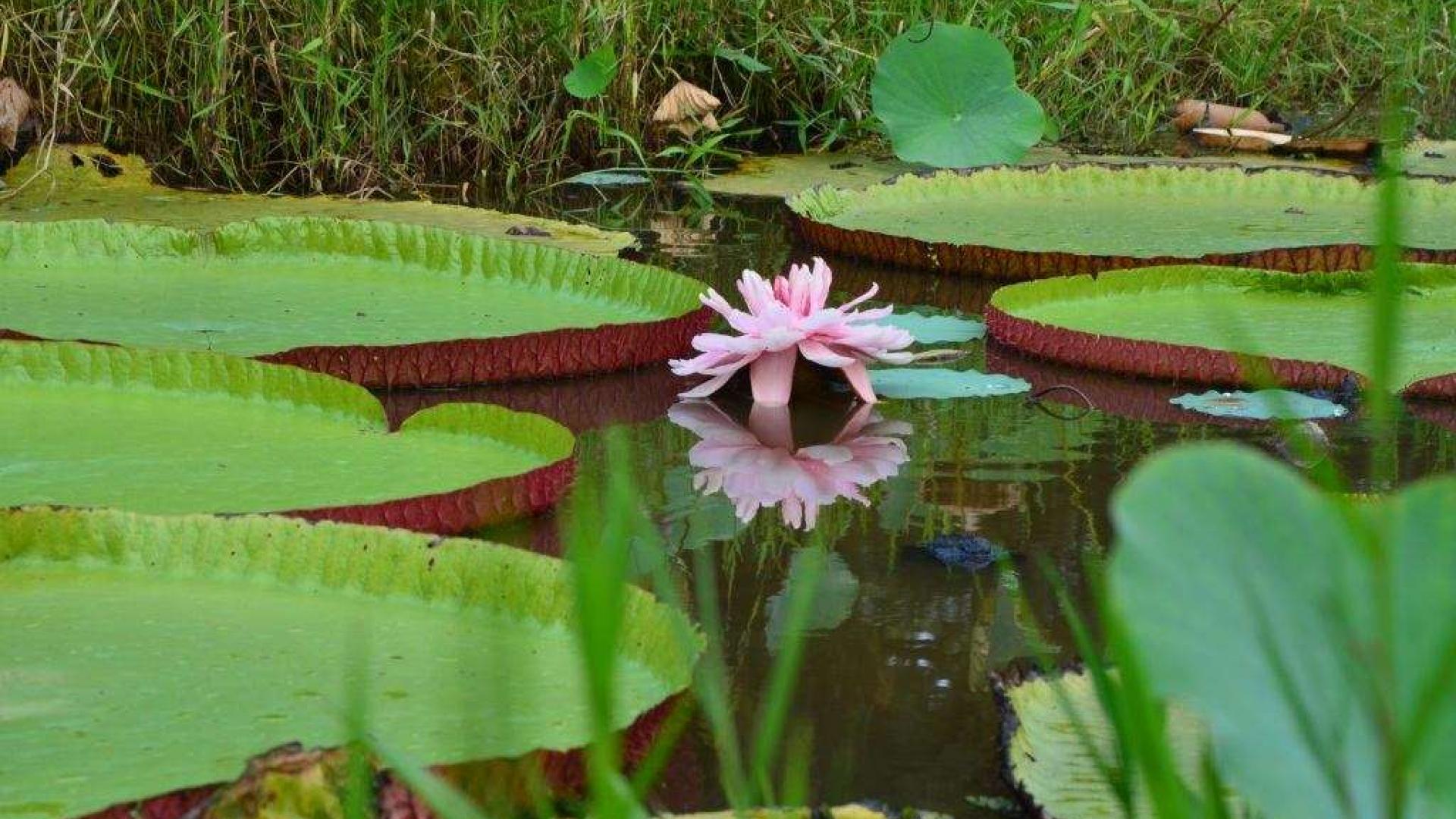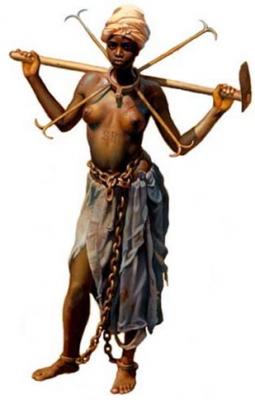The unit of life on the plantation
White  plantation owners used various methods to retain full control over slaves. The main method of "divide and conquer." Members of one tribe were divided into different plantation to prevent contact between them. This separation, however, created a problem of communication. The planters were looking for a way to communicate with all of his slaves, who initially spoke all different languages. Gradually developed a Creole-Dutch, which became the common language for the slaves. When the British took control of Guyana, the English word is gradually added to the language that became the basis of the Creole language.
plantation owners used various methods to retain full control over slaves. The main method of "divide and conquer." Members of one tribe were divided into different plantation to prevent contact between them. This separation, however, created a problem of communication. The planters were looking for a way to communicate with all of his slaves, who initially spoke all different languages. Gradually developed a Creole-Dutch, which became the common language for the slaves. When the British took control of Guyana, the English word is gradually added to the language that became the basis of the Creole language.
Among slaves were many Muslims, and those who retained their tribal beliefs. But the planters are Christians not allow the possibility of other faiths on the plantations. For the purpose of rooting of Christianity in the plantation appeared the Christian missionaries. Sermons were held on Sundays, and gradually became obedient slaves and unable to raise a rebellion in the plantations.
Another means of control was to create a class system among the slaves. Slaves plantations were lower class, the class was higher among factory workers
An even higher class were skilled workers such as blacksmiths, carpenters, masons, who had the opportunity to earn money in addition to the basic work for themselves.
Even higher in the class were the overseers, who were selected specifically to control the other slaves. Household slaves had a special place in this system, because they worked in the master's house and sometimes get some privileges from the owners. So looking at the other slaves with scorn. Lowest rung in the hierarchy were those who tried to rebel. And, often, it is home slaves were given the rebels to their masters.
Then went on separation by color. In the early history of slavery that anyone could rise to the position of overseer. But, over time, children were born of white men and black women (mulatto), white men and mulatto women (mestizo) and mulatto men and black women (sambo). Some of the slaves, thus, have a lighter skin. That was another reason for discrimination in their favor. Slaves - white children in the class defined above, than just black. This was the beginning of discrimination based on skin color in Guyana.
Free time.
Except for the overseers of slaves, all the other slaves had no earnings. They could buy something for yourself or your home, if only to sell something from his rations, or selling animals, which themselves grew.
Sunday was market day, where you can exchange goods, socialize and listen to the new gossip.
In addition to the resurrection of the servants were at rest. As a rule, after the harvest, Christmas and holidays, when slaves were allowed to hold dances that lasted until midnight.
The slaves also were allowed to fly free. However, when a slave could accumulate enough money to buy his freedom, he was already old and weak. In rare cases, women who bear children from the host, got more freedom at a young age.
The device plantation.
The land consisted of the plantation plantation cane, forest and pasture. Planters preferred to grow cane in areas not less than 200 acres. A bit of land allocated for cultivation of root crops, bananas and vegetables for food. Forests used for timber and pasture, respectively, for cattle grazing.
Typical buildings on the plantation had been a mill, a boiler room and spa. Around these buildings had a lot of smaller buildings and sheds, which were working blacksmiths, carpenters, masons, coopers, and other artisans. It also housed a prison for slaves punished.
Not far from the factory building located at home of European managers and executives. Here lived an accountant, supervisors and other office staff.
In the largest house lived planter.
Housing slaves located at some distance from the homes of Governors.
Most of the slaves brought from Africa were from Sierra Leone, Benin, Gold Coast and Vindvort Coast. They belonged to different tribes and different language groups.
According to the Dutch planters, and behind them and the British, African beliefs could not be recognized religion. To characterize them as pagan superstition. It was believed that Africans are incapable of religious feeling.
However, some slaves were of Muslim faith.
One of these was Toby, a Muslim slave in Berbice. His said the Rev. John Ray, who arrived as a missionary in Berbice in the early 19th century.
He noticed a smart young man and was struck by his desire for knowledge. Toby went to the Christian faith. With the help of missionaries, he was able to go to England for further studies at the London Missionary Society. There he received the freedom and a new name - Thomas Lewis. In 1836 he returned to Berbice as a teacher.
Toby ancestors probably converted to Islam during the spread of the religion in West Africa across the Sahara Desert.
However, Islam is eradicated in the plantations, including the purpose of separation of slaves. Life on the plantations did not contribute to long prayers. And the servants of the Muslims
was not the Quran and they lacked the leadership of the Imams. It was impossible to observe fasting on certain days and celebrate the holidays at the appropriate days.
Islam could not survive in the environment of the slaves. However, later work - the Indians have brought this religion with them, and it is still rooted in the country.
African ancestral beliefs were called "obea." Of course, they have undergone significant changes, although there are still in an African environment. The practice of African beliefs in the days of slavery could only be carried out secretly. The result of this secrecy was that the language was lost rites and ceremonies themselves distorted. In addition, the imposition of Christianity eradicated, blocked all African beliefs. The separation of tribes from each other, also played a destructive role for the preservation obea.
However, if, for example, in Jamaica in 1760 for the observance of rituals followed obea death penalty, there is no evidence such as the persecution of these rites in Guyana. But, of course, religion had its own leaders, and was unable to continue.
- Log in to post comments

